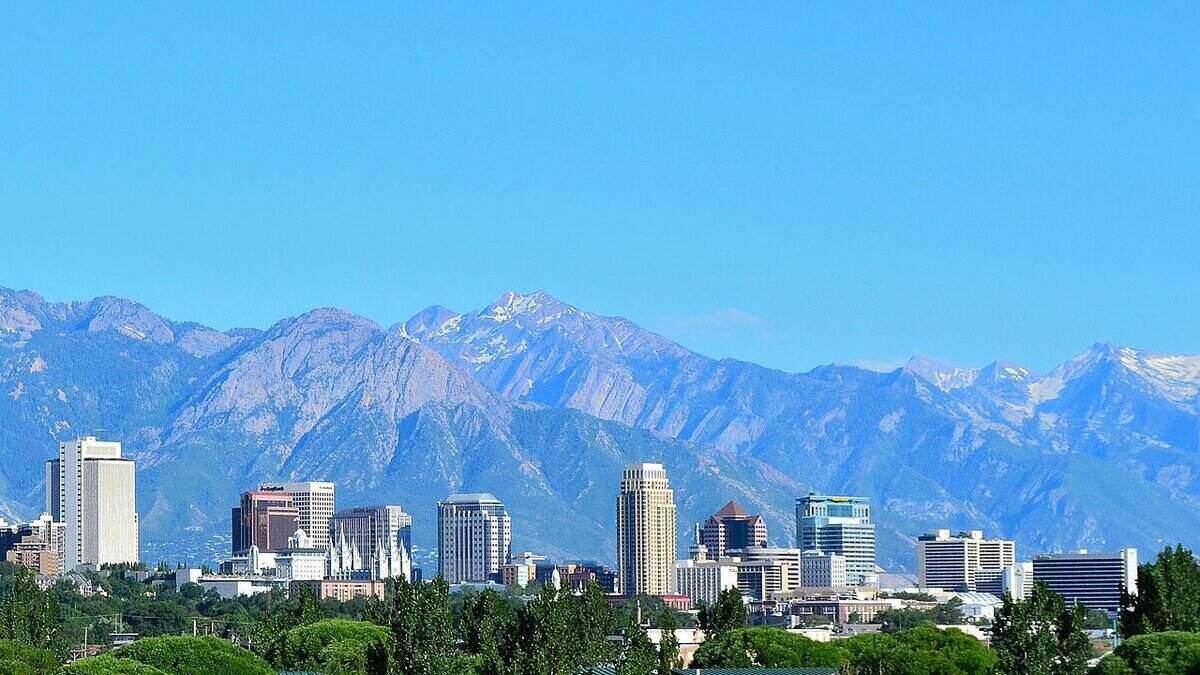
Although Salt Lake City’s backdrop is breathtaking, the hot, dry summers and wet, freezing winters aren’t a great combination for an easy landscaping project. Using these 12 low-maintenance landscaping ideas, homeowners can design a yard that’ll have them spending less time working in the great outdoors and more time enjoying it.
- 12 Low-Maintenance Landscaping Ideas for Salt Lake City Yards
- 1. No-Sweat Natives
- 2. Rainless is Painless with Xeriscaping
- 3. Creative Container Gardens
- 4. Singin’ in the Rain (Garden)
- 5. Install an Irrigation System
- 6. Artfully Artificial
- 7. Gorgeous Ground Covers
- 8. Have a Hardscape
- 9. Raise a Rock Garden
- 10. Mulch is a Must
- 11. Plant Plenty of Perennials
- 12. Get Excited About Evergreens
- What is Low-Maintenance Landscaping?
- FAQ About Low-Maintenance Landscaping in Salt Lake City
12 Low-Maintenance Landscaping Ideas for Salt Lake City Yards
1. No-Sweat Natives
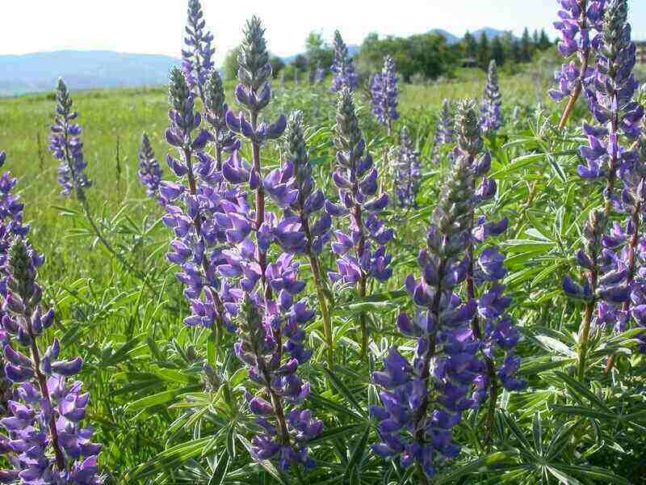
When you use native plants, you won’t have to worry about them dying in the cold of winter or the heat of summer. Plants native to Utah are used to the local climate, so they can survive in your landscape with little help from you.
Native plants have also adapted to this area’s pests, soils, and modest levels of rainfall, so you’ll spend less time watering, fertilizing, and dealing with pests than you would with non-natives.
examples of native Salt Lake City plants that would grow well and look great in your yard include:
- Great Basin sagebrush
- Utah mountain lilac
- Silvery lupine
2. Rainless is Painless with Xeriscaping
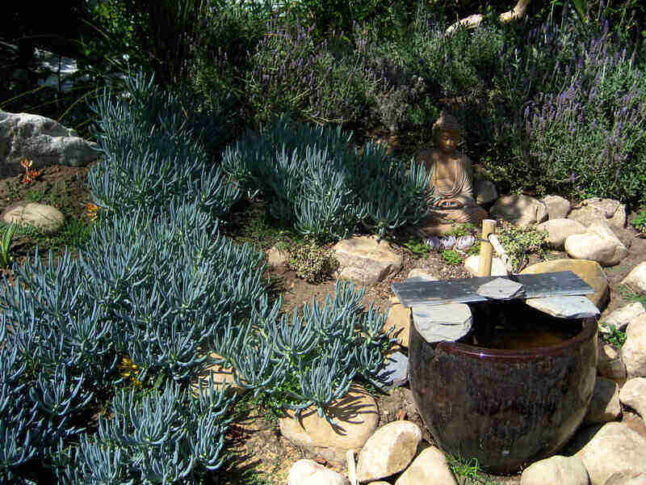
Xeriscaping is a great low-maintenance landscaping technique for Salt Lake City because xeriscapes survive on little water.
These water-wise landscapes do well during droughts because they feature drought-tolerant plants and hardscapes like walkways, pavers, fire pits, and patios. You won’t have to water a xeriscape even during long periods with no rain.
Good plants for xeriscaping in Utah include cold-hardy succulents. Since Salt Lake City falls in Zone 7b, these are some of the best choices:
- Agave
- Yucca
- Spurge
3. Creative Container Gardens
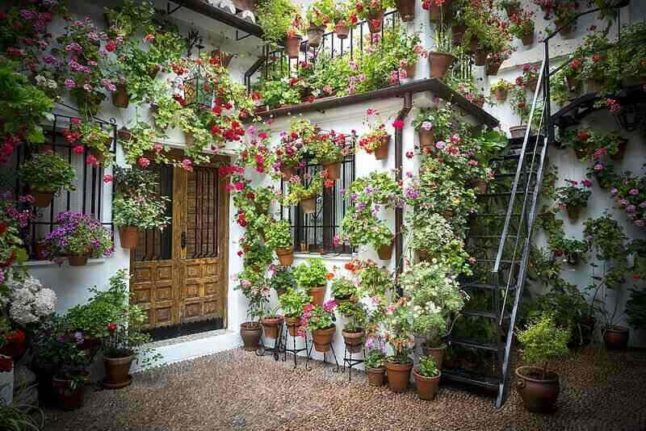
Instead of planting your flowers and other plants in the ground, consider designing an outdoor container garden that will be easier to care for. Container gardens can feature plants in pots, planter boxes, or repurposed containers such as barrels and wheelbarrows.
For people with limited mobility, container gardens are a more accessible alternative to traditional gardens, since you won’t have to get on your knees to plant or tend them. Plants in containers are also easier to switch out if one dies or if you want to fill your yard with different colors for different times of year.
When winter rolls around and temperatures start to drop, container gardens have even more benefits. To protect your potted plants from freezing, all you’ll need to do is bring them inside. That way, you’ll have more plant options and you won’t have to worry about frost protection measures such as covering your plants.
4. Singin’ in the Rain (Garden)
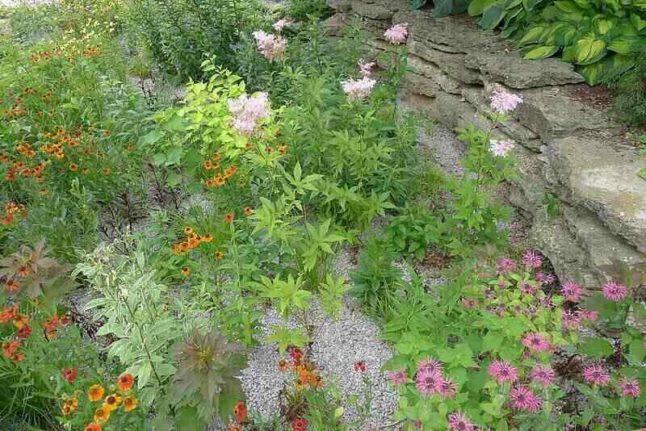
While a rain garden might take some creativity, research, and effort to design and build, it will be more low-maintenance in the long run than a traditional garden. That’s because rain gardens collect stormwater runoff and therefore don’t need supplemental watering from you. After you establish your rain garden, it can take care of itself for the most part.
That’s not all rain gardens are good for. They’re also an easy way to help the environment because they filter pollutants out of stormwater runoff before it flows into the Great Salt Lake and other local basins.
With a rain garden, you can help keep Salt Lake City’s water clean, so it doesn’t go the way of the city’s air, which is among the most polluted in the U.S.
For your SLC rain garden, you’ll want to use plants that can tolerate both drought and flooding so your rain garden lives through dry periods and standing water for up to 48 hours after rainfall.
5. Install an Irrigation System
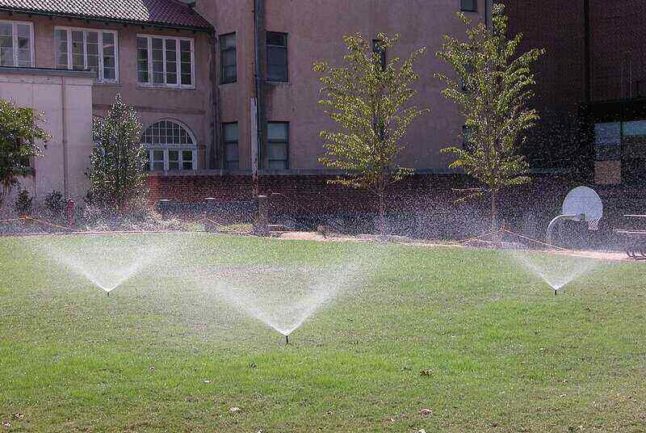
If the idea of high water use and a high water bill doesn’t bother you, an automatic irrigation system is an effective way to make your Salt Lake City landscape design more low-maintenance. During the dry season, all you would need to do to keep your lawn and garden from thirsting to death is set the timer on your sprinkler system.
Even though it can get expensive, installing an irrigation system might be worth it for you, since automatic sprinklers increase property value and set you free from having to manually water your plants.
6. Artfully Artificial
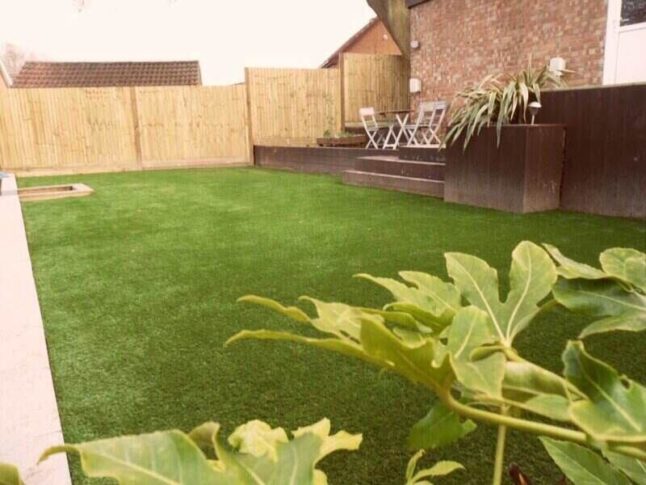
With artificial grass, you won’t need sprinklers or rain. Artificial grass looks its best year-round without any maintenance. It doesn’t need watering, and best of all, it doesn’t need mowing. Scratch off your to-do list pushing a heavy lawn mower in the oppressive summer sun if you install an artificial lawn.
In a home with pets or children who enjoy running around outside, artificial grass is a doubly good idea. Those sweet little feet can crash through an artificial lawn without damaging it and causing more landscape problems for you to solve.
7. Gorgeous Ground Covers
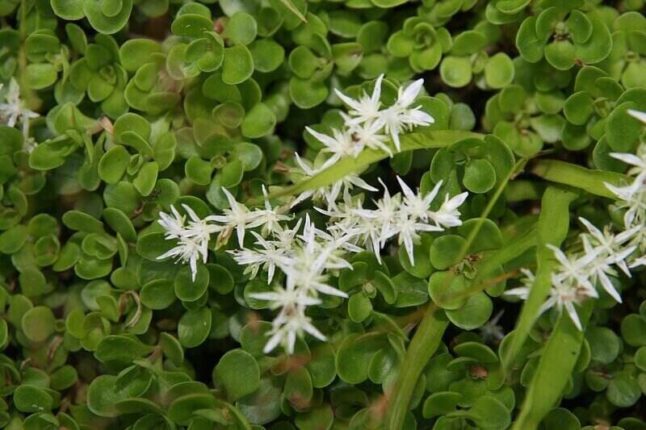
Another way to reduce time spent mowing in summer is to replace your grass with a ground cover, which is a living plant that requires much less maintenance than a traditional lawn.
There are hundreds of ground covers to choose from with different looks for different landscape designs. Some have colorful flowers, while others are a more understated green, much like normal grass.
Ground covers for Salt Lake City’s USDA hardiness zones include spotted deadnettle, creeping juniper, and creeping sedum (pictured).
8. Have a Hardscape
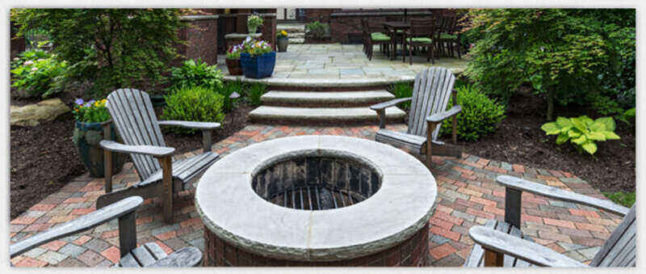
For those who aren’t familiar with landscaping terminology, a hardscape is any landscape feature other than plants. That includes patios, retaining walls, pathways, pergolas, and other similar structures.
The big advantage of hardscapes: Hardscaping doesn’t involve grass or plants that need regular care. The most you will need to do to maintain a hardscape is clean it occasionally. If it’s made of wood, you may need to stain or paint it once every few years, but that’s still much less work than extra grass or plants would be.
An added bonus? Hardscapes can increase your property value and give you a nice space to spend time outdoors during warmer months.
9. Raise a Rock Garden
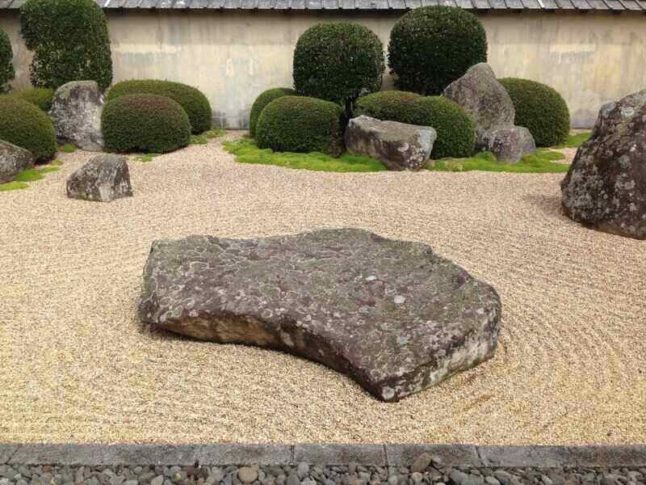
A rock garden is a way to fill space in your landscape without adding more needy, thirsty plants. In a rock garden, the main focus is maintenance-free boulders, stones, and gravel instead. You can add some drought-tolerant, Salt Lake City-friendly plants as accent features if you want a touch of green, but that’s up to you.
Depending on how you design your rock garden, you can turn it into a relaxing space or a showy spectacular, just as you can grow a traditional garden in whatever style you like. The difference is you don’t have to stress about keeping a rock garden alive.
10. Mulch is a Must
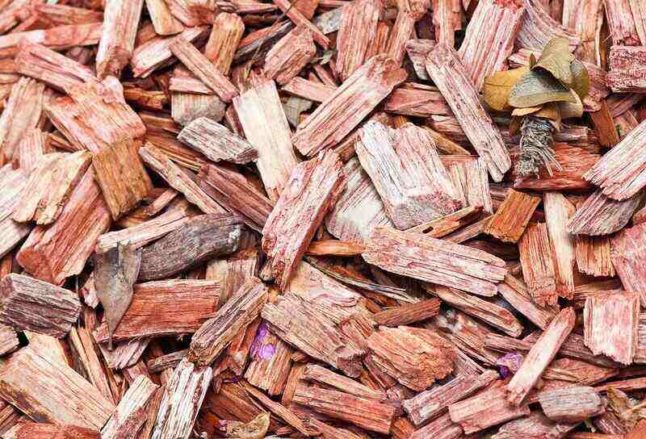
Adding a layer of mulch can shave hours off the time you spend maintaining the plants in your flower beds, lining your walk, or in beds along the front of your home.
The benefits of mulch: Mulch smothers weeds and helps your plants retain moisture. That means your mulched garden won’t need weeding or frequent watering through dry spells.
Different kinds of mulch: Organic mulches like bark and wood chips break down into the soil and add nutrients, which means you’ll have to install new mulch each spring. Inorganic mulches like rocks and rubber mean less work for you, since they last for years.
For added protection from weeds, you can install landscape fabric or a more eco-friendly weed barrier under your mulch. Weed barriers help the mulch suppress weeds more completely.
11. Plant Plenty of Perennials
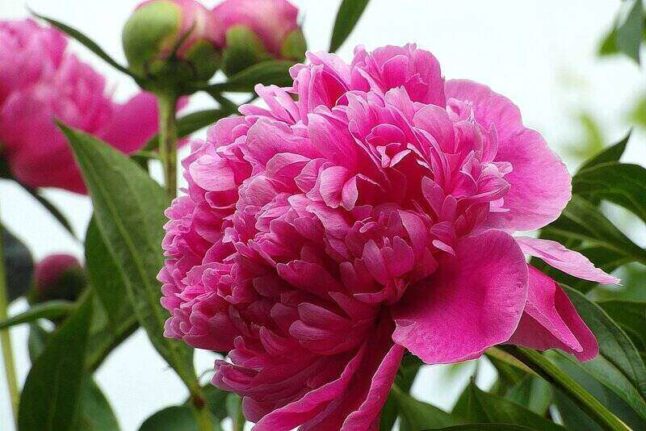
Perennial plants are another must-have for your low-maintenance garden or flower bed. Unlike annuals, which are common in areas like Salt Lake City with drastic temperature changes from summer to winter, perennials come back year after year on their own. With a landscape full of perennials, you won’t have to plant new flowers every spring.
Many beautiful perennials are hardy enough to survive SLC’s winters and return with colorful blooms in spring. Local favorites include peonies (pictured), daylilies, and several species of columbine.
12. Get Excited About Evergreens
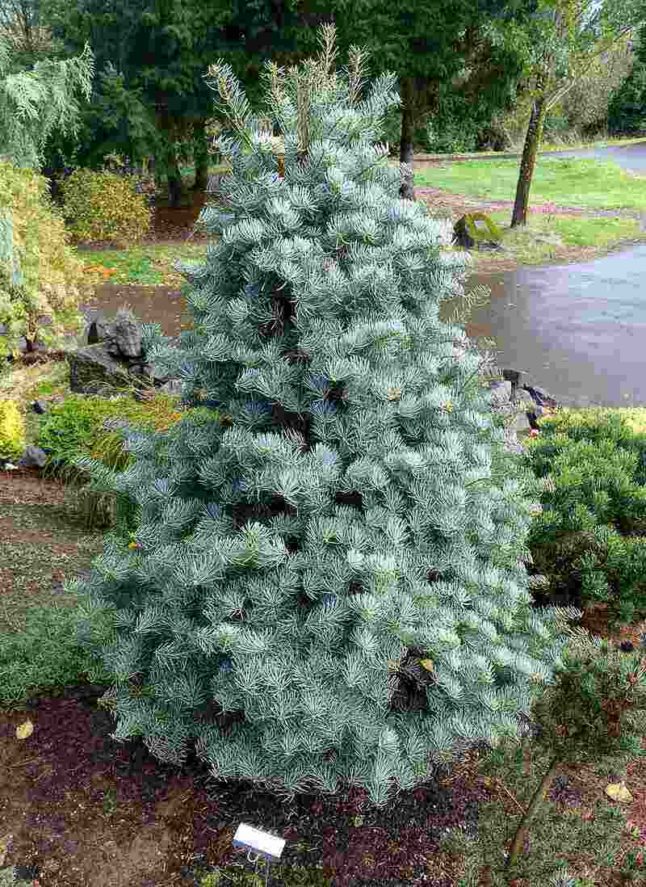
If you want trees in your landscape along with your flowers, consider your evergreen options. Evergreens keep their leaves year-round, so they will look good in the dead of winter and they will keep your yard from turning into a sea of fallen leaves in fall.
With evergreens, you can leave the rakes and leaf blowers in the shed.
Evergreen trees that thrive in Salt Lake City’s climate include the white fir (pictured) and several species of junipers and cypresses.
Aside from trees, there are also many evergreen shrubs, ground covers, and vines that won’t shed their leaves. That means less work for you and a landscape that looks lush and alive all year long.
What is Low-Maintenance Landscaping?
Anything to do with lawns is going to require some maintenance, but low-maintenance landscaping keeps installation, care, and upkeep to a minimum. If you’re wondering what that looks like, Texas A&M has some great tips.
- Design for low-maintenance: Use larger beds rather than several small beds for easier mowing; group like-maintenance plants together (which keeps your care focused on a few areas rather than many); and use edging materials like rocks to limit grass creeping into your beds.
- Keep it simple: The more you add to your landscaping, the more you have to maintain. So, simple designs equal simple lawn care.
- Utilize nature: When possible, use native plants which are made for your climate. If your property abuts nature, let it be. It’s beautiful as it is. Native plants will require less watering on your part as they’re made for your climate.
- Start weed-free: Before you start creating your landscaping, use herbicides or other natural methods to clear the space of weeds. They’re easier to tackle when they’re in your turf than when they’re in your garden.
- Choose wisely: Choose plants that are low-maintenance, which will vary widely depending on your climate and your design ideas.
- Mulch matters: Using mulch reduces weeds and helps with moisture and nutrient retention. While mulching won’t work with every outdoor space, it’s a staple in most landscape designs for a reason.
- Invest in irrigation: Irrigation keeps lawns and flower beds beautiful with a touch of a button or a turn of the dial. Why do all that landscaping work just to let drought destroy your design?
FAQ About Low-Maintenance Landscaping in Salt Lake City
Drought-tolerant native plants will require the least maintenance in a Salt Lake City landscape. Remember, native plants have adapted to the local climate and don’t need as much care as non-natives. And drought-tolerant native species won’t need watering through SLC’s dry periods.
With Utah’s dry, hot summers, low water can be a concern for your lawn, especially for your plants. If you’re looking for a water-wise landscape, the University of Utah has released a list of water-wise plants for your Utah landscape.
• Deciduous Trees: Bigtooth Maple, Desert Willow, Single leaf Ash
• Evergreen Trees: White Fir, Rocky Mountain Juniper, Blue Atlas Caesar
• Shrubs (Full Sun): Utah Holly, Butterfly Bush, Lilac
• Shrubs (Shade): Mountain Spray, Snowberry, Backhaw
• Perennials (Full Sun): Cupid’s Dart, Evening Primrose, Utah Lady Finger
• Perennials (Shade): Yellow Corydalis, Geranium, Coral Bells
• Ornamental Grasses (Full Sun): Blue Fescue, Threeawn Grass, Maiden Grass
• Ornamental Grasses (Shade): Tufted Hair Grass, Purple Moor Grass
• Groundcovers: St. Johnswort, Creeping Veronica, Sun Rose
• Vines: Clematis, Trumpet Vine, Wisteria
For more specific planting advice, check out this resource from Utah State University that helps you choose the best drought-tolerant plants for your property’s specific conditions (soil type, sun exposure, etc).
Important Note: Utah Water Savers offers rebates through their localscape program. Follow their checklist to receive your rebate (amount depends on your lawn size).
Xeriscapes have become popular in recent years, especially in front yards. They’re low maintenance, and the best designs use native plants. Native plants are best because they naturally adapt to the environment, form deeper roots, and thrive in the area’s growing conditions.
According to the Salt Lake City website, these are the best native plants for xeriscaping:
• Flowers: Strawberry, sunflower, violet, rabbitbrush
• Shrubs: Cranberry, blueberry, chokeberry, almond
• Trees: Oak, alder, willow, birch
When to Call a Landscaping Professional
Even though the DIY method can save you money, it also can mean disaster for your landscape design if you don’t know what you’re doing. You might be better off hiring a local Salt Lake City landscaping expert to design and install your low-maintenance landscape for you.
Here’s why: Pros have a trained eye for garden design, and they can help you figure out which plants and other features would work best in your yard and increase your home’s curb appeal.
If you want to take the burden of landscaping entirely off your own shoulders, you can even hire a pro landscaper to maintain your yard for you. Many pros offer regular landscape maintenance services such as lawn mowing, bush trimming, and leaf removal. With their help, your landscape can go from low-maintenance to maintenance-free (for you, at least).
Don’t let Salt Lake City’s two-faced climate scare you out of creating a landscape that wows your friends and neighbors. Even here, having a beautiful yard can be easy with these low-maintenance landscaping techniques.
Main Photo Credit: Garrett / Wikimedia Commons / CC BY 2.0